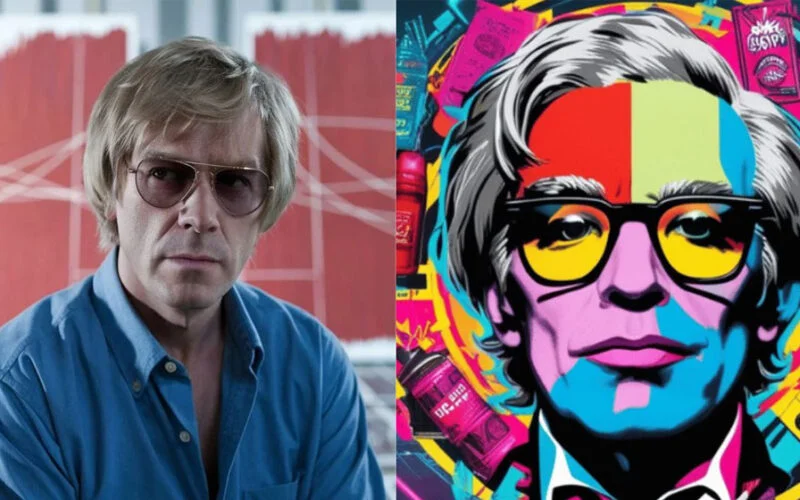In the world of contemporary digital art, the fusion of classic pop sensibilities and internet-age irony has birthed a new generation of creators pushing the limits of expression. Among them stands “AndyWarhella,” a pseudonymous online persona and artist whose name echoes the legendary Andy Warhol while signaling a playful, punk-infused evolution. AndyWarhella is not merely a tribute but a remix—blending nostalgia, rebellion, and digital commentary into a vibrant new iconography. With a cult following across social platforms and NFT spaces, AndyWarhella represents the chaotic beauty of meme culture, the resurrection of pop art, and the defiant individualism of the post-postmodern age.
The Name Is the Message
The moniker “AndyWarhella” is itself a clever mashup—part homage, part subversion. It immediately invokes Andy Warhol, the father of pop art known for elevating soup cans and Marilyn Monroe portraits into high art. But the added “hella” injects a contemporary, slang-ridden swagger, implying a warped mirror of Warhol’s world—one filtered through TikTok, internet nihilism, vaporwave, and late-capitalist collapse. It’s this blend of reverence and rebellion that defines AndyWarhella’s ethos. Where Warhol commented on mass production, Warhella comments on mass replication, meme mutation, and digital overstimulation.
In this remix-heavy world, identity is fluid, style is iterative, and art is as much about provocation as it is about production. AndyWarhella thrives in this space, offering visuals that feel like corrupted files of American pop culture—glitchy Barbie dolls, neon-tinted fast food logos, pixelated celebrities, and cyberpunk saints with halos made of hashtags.
Aesthetic of Rebellion
AndyWarhella’s art often draws from the overstimulated aesthetic of internet culture: Day-Glo palettes, VHS static overlays, and a layered collage style reminiscent of Tumblr in its prime. The works are both chaotic and calculated, resembling digital graffiti sprayed across the endless wall of the internet. Influences range from 1980s television to 2000s Myspace profiles, mixed with iconography from classical art, streetwear, and vaporwave ephemera.
Warhella’s work is saturated in irony, but beneath the surface lies a real emotional core. Much of it grapples with alienation in the digital era, the endless quest for attention, and the decay of authenticity in an influencer-saturated culture. Through warped smiles and ironic slogans, Warhella often critiques the very systems the art is embedded within: consumerism, clout-chasing, identity branding, and the commodification of rebellion.
One image might show Ronald McDonald melting like a Dali clock, while another features Jesus wearing Gucci, surrounded by QR codes and emoji halos. These juxtapositions are jarring but intentional—forcing the viewer to reckon with a world where sacred and profane, high and low, have merged into a single visual language.
The Warhella Identity: Elusive and Evolving
AndyWarhella doesn’t appear to be one specific person—at least not publicly. The persona may be operated by a single artist or a collective, but part of the mystique lies in the anonymity. Social media accounts under the AndyWarhella name post cryptic captions, psychedelic edits, and Dada-like slogans (“sell your soul for serotonin” or “God is an algorithm”). This feeds into the Warhella mythos: an omnipresent internet oracle observing modern culture from behind a neon mask.
Unlike Warhol, who famously said, “In the future, everyone will be world-famous for 15 minutes,” Warhella might argue that everyone is famous now—just not meaningfully. Fame is fractured, diffused across For You pages and algorithmic timelines, and attention is the new currency. Warhella’s creations often reflect this distortion, depicting avatars addicted to likes, saints made from selfies, or influencers drowning in pixels.
This commentary comes without heavy-handedness. Instead, it is presented in hyper-saturated surrealism that lures you in before delivering a gut-punch of recognition. The viewer becomes complicit, laughing at the absurdity while realizing they, too, are caught in the loop.
NFT Culture and Digital Collectibles
Like many next-gen artists, AndyWarhella has ventured into the NFT (non-fungible token) space, finding an ideal platform for art that is born digital. The NFT format allows Warhella’s moving images, glitch animations, and surreal loops to live as collectibles on blockchain marketplaces. The art often includes dynamic elements—looping GIFs, interactive components, or time-sensitive visuals that evolve.
While critics of NFTs cite environmental concerns and speculative bubbles, Warhella uses the format to underscore themes of artificial scarcity, commodification, and hype. Many pieces are deliberately ironic—NFTs of digital pills labeled “influencer detox” or spinning 3D heads of digital prophets reciting quotes from Reddit threads.
Some of Warhella’s most notable NFT drops have sold out within minutes, with collectors praising the unique fusion of aesthetic flair and cultural critique. More than just collectibles, they function as fragments of a larger world—Warhella’s dystopian dreamscape where beauty and horror scroll side-by-side.
Cultural Impact and Legacy in Progress
AndyWarhella is still in the early stages of public recognition, yet already the work is influencing a new generation of digital creatives. From TikTok video editors to zine designers and AR filter creators, Warhella’s visual language is being sampled, stitched, and spun into new formats. The Warhella brand—if it can be called that—eschews traditional pathways to fame (galleries, museums, agents) and instead thrives on the decentralized, community-driven energy of the internet.
There’s something punk about this approach, even if the tools are pixel-based. It reclaims the chaotic spirit of Warhol’s Factory but updates it for an age where factories are Discord servers and creative collectives exist in shared Google Drives. AndyWarhella’s art is less about perfection and more about provocation—images meant to be shared, memed, critiqued, and corrupted.
In many ways, AndyWarhella is the spiritual descendant of not just Warhol, but also artists like Barbara Kruger, Jenny Holzer, and Jean-Michel Basquiat—those who dared to challenge the status quo using the language of popular culture. But unlike them, Warhella doesn’t have to wait for gallery walls. The exhibition space is already in everyone’s pocket.
The Future of AndyWarhella
Where does AndyWarhella go from here? Likely deeper into immersive media—AR filters that warp your reality, AI-generated collabs, or possibly metaverse installations where viewers step inside a Warhella dream. As digital tools evolve, so too will the mediums. But one thing is clear: the message will remain loud, colorful, and critical.
AndyWarhella isn’t just a brand or an aesthetic—it’s a mirror held up to the digital world. Sometimes that reflection is beautiful, other times grotesque, but it’s always honest. In a society drowning in content, AndyWarhella reminds us to pause, glitch the feed, and ask ourselves: what are we really looking at?

